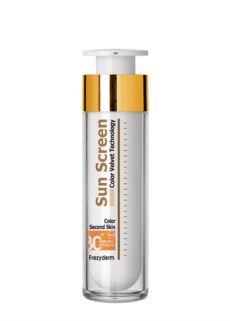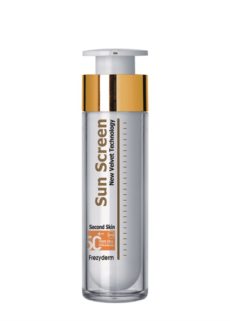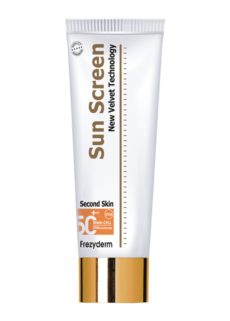
What exactly is SPF?
We know that sunlight beams down UVA (ultra violet A) and UVB (ultra violet B) at varying degrees of intensity throughout the year. We know that these rays are responsible for wrinkling, brown spots, sunburn, rashes, and, very often, cancer. And yet for a lot of us, that’s where our knowledge ends. We’re vague about what exactly SPF is, how it works, when we should use it, how often we should apply it…
Go to any park in London on the first warm day of spring and you’ll see countless people in flagrant disregard of the sun’s harmful effects. “British sun isn’t as strong as the sun on your holidays.” “I tan, I don’t need to wear sun cream.” “I’ve already put on some SPF, I don’t need more.” These are some of the most common misconceptions surrounding SPF and sun protection.
The skin is the largest organ in the human body, and we think you’ll agree, it’s a pretty important one. And given the exponential rise of cancer in the UK, it’s more vital than ever before to protect yourself in the sun. Here are our top pointers to getting the most out of your SPF.
- How does SPF work?
SPF (Sun Protection Factor) is how the protective quality of a sun cream is measured. That’s why sun creams come with different numbers on them aka different levels of ray-busting formulas. A way to get your head around it all is this: if your skin usually starts to turn crimson after 20 minutes’ exposure to the sun, wearing factor 15 will prevent reddening for 15 times longer than your skin’s natural barriers. So, 5 hours. But it will need to be reapplied within this period.
- Is there a big difference between all the numbers?
There is between factor 15 and factor 30 but once you start getting to the upper echelons of sun cream, the difference is (surprisingly) minimal. So for example, SPF 30 keeps out 97% of red-causing, UVB rays and SPF 50 keeps out 98%. It’s an incremental difference but if you’re light sensitive, incredibly pale or have previously suffered from cancer, any increase in protection (however slight) is beneficial.
- What is a broad-spectrum SPF?
You know those people that sit out in the sun, with no cream on, and turn a lovely shade of mahogany? These sun worshippers feel like they’re somehow defying the sun’s rays because they never get burnt. But, just like skinny people with a junk food diet are storing up unseen health problems for the future, people who don’t visibly burn can still incur harm. The reddening of the skin is only a reaction to UVB rays but plenty of bad stuff can come from UVA rays, too. It’s just without the red flag of sunburn, it can go unnoticed. A broad-spectrum SPF shields against both types of rays.
- So, when should you wear SPF?
All the time. Next time you’re checking the weather on your phone, take a peek at the UV index. This indicates how prevalent UV rays are expected to be that day. And, believe it or not, you can have instances where the temperature is a bbbrrrrrrrrr-inducing 4°C but the UV index is a worryingly high 6. In autumn and winter, you should be wearing at least a factor 15 on your hands and face and in spring and summer you should be wearing something higher (depending on your skin type).
Frezyderm has an incredibly comprehensive range of SPFs for the whole family. From revitalising face creams and nourishing lip balms to no-fuss sprays for little ones, the sun just got a whole lot safer.













